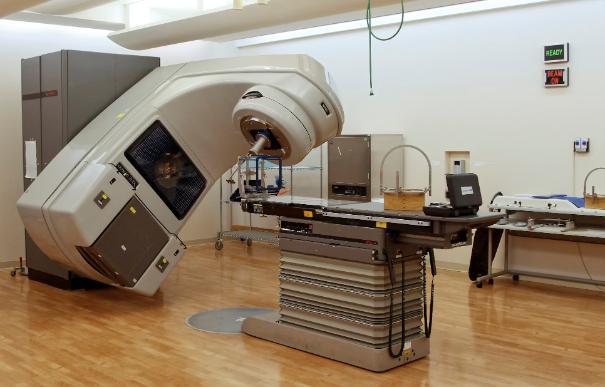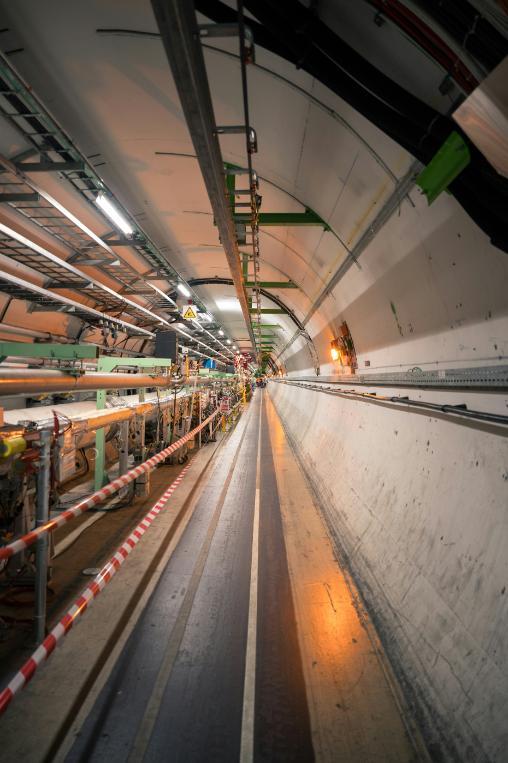Summary
Professor McNulty and colleagues have taken particle detectors developed at CERN and redeployed them in Irish hospitals as imaging devices and dosimeters (devices which measure uptake of radiation among cancer patients). Their detectors are 100 million times faster and have better image quality than current technologies, and they have the potential to improve cancer diagnosis and treatment and lead to better patient outcomes. The research also fostered new collaborations and trained students in the use of this technology. Reports to the Oireachtas have contributed to the case for Irish membership of CERN, since which the country has formally applied for membership.
Research description
At CERN’s Large Hadron Collider (LHC), the world's largest particle collider, scientists accelerate beams of protons close to the speed of light, and smash them together to uncover fundamental truths about our universe. The analysis of the collisions requires incredibly powerful three-dimensional cameras (detectors) capable of imaging elementary particles.
 Ireland is home to around 30 much smaller colliders, all of which are situated in hospitals, where they’re used for radiotherapy to treat cancer. In 2017, Professor McNulty and his team invited colleagues from Kansas and Glasgow to Dublin, where they installed two powerful CERN detectors (known as LGAD and Medipix) in the medical linear accelerator that is used for radiotherapy at St. Luke's hospital. These detectors are 100 million times faster and have better image quality than technologies currently used in medical settings.
Ireland is home to around 30 much smaller colliders, all of which are situated in hospitals, where they’re used for radiotherapy to treat cancer. In 2017, Professor McNulty and his team invited colleagues from Kansas and Glasgow to Dublin, where they installed two powerful CERN detectors (known as LGAD and Medipix) in the medical linear accelerator that is used for radiotherapy at St. Luke's hospital. These detectors are 100 million times faster and have better image quality than technologies currently used in medical settings.
Analysis of data from the LGAD detector showed new features of the particle beam: individual electrons were observed, and the pulse structure was resolved for the first time. Having published these findings, the team was invited to install their LGAD detectors at the proton therapy machine in Krakow, one of only 14 in Europe, supported by a Horizon grant. Proton therapy is a new method for treating cancer: it is essentially a mini-LHC that uses a beam of protons to irradiate diseased tissue.
Here, the team demonstrated that the LGAD detectors can be used as dosimeters (devices that measure how much radiation the patient is exposed to) and to measure the beam energy. This is particularly important for FLASH therapy, an emerging technology for cancer treatment that involves an ultra-high dose of radiation, but that has not yet received patient approval, not least because standard detectors cannot measure the dose: the team’s detectors can.
Following experience with the Medipix detector, a new team was established at the UCD Centre for Physics in Health and Medicine and St. Vincent's University Hospital to develop a device known as a Compton camera, which can image different organs at high resolution and search for tumours. Doing so requires that the patient is first injected with a small amount of radioactive material. This research shows that he Compton camera can produce images of far higher quality than existing methods, and does so with a radioactive dose to the patient estimated to be a factor 20 less.
 The LGAD sensors used by the team have a time resolution 100 million times better than currently used technology, and provide proof of principle for a new dosimeter for FLASH therapy. New application of Medipix sensors have resulted in a Compton camera with a 20-fold sensitivity improvement over conventional cameras, thereby reducing radiation dose for the patient.
The LGAD sensors used by the team have a time resolution 100 million times better than currently used technology, and provide proof of principle for a new dosimeter for FLASH therapy. New application of Medipix sensors have resulted in a Compton camera with a 20-fold sensitivity improvement over conventional cameras, thereby reducing radiation dose for the patient.